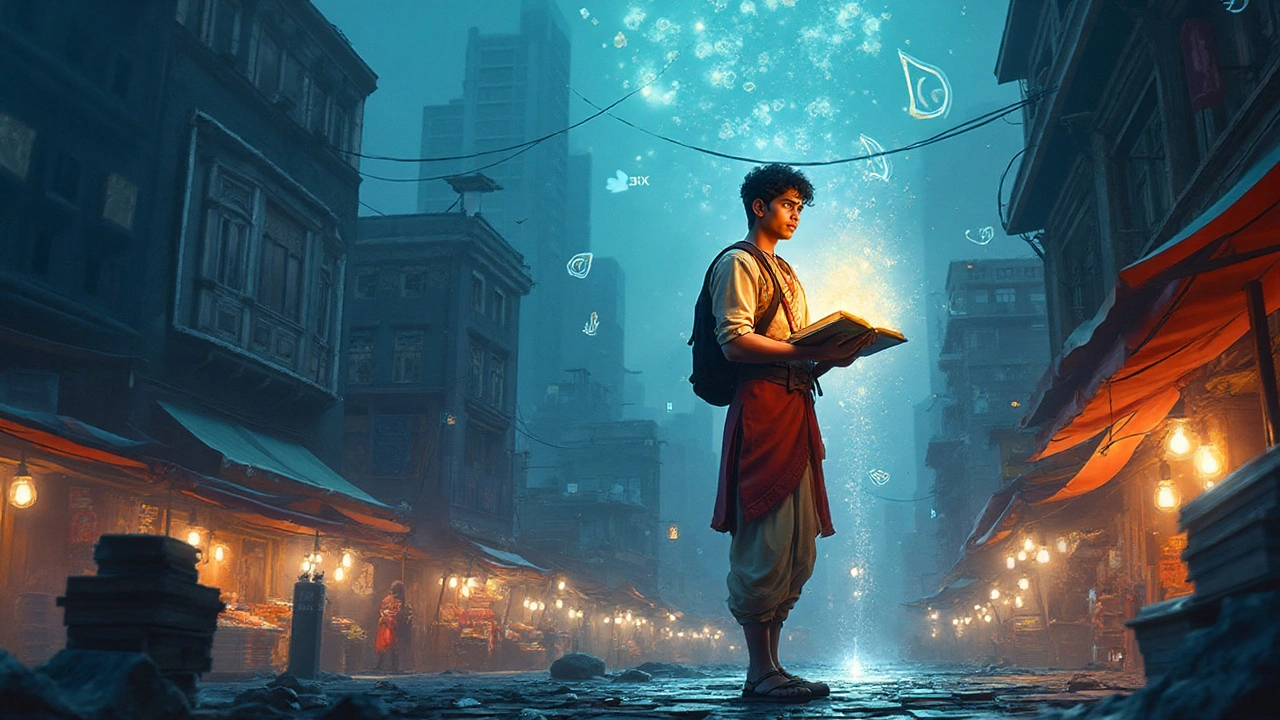YA Fiction Preference Quiz
Young Adult literature is a genre of fiction aimed at readers aged 12‑18, characterized by protagonists navigating identity, relationships, and social challenges. Its surge in popularity over the last decade has reshaped publishing, streaming, and pop culture.
What Drives the Appeal?
Three core forces push young adult fiction popularity forward: relatable coming‑of‑age stories, the amplification power of social media, and a pipeline of cross‑media adaptations.
Relatable Themes and the Coming‑of‑Age Hook
Coming‑of‑age is a literary theme focusing on a protagonist’s transition from adolescence to adulthood, often featuring first love, rebellion, and self‑discovery. Readers see themselves in characters who face school pressure, familial expectations, or identity questions. Data from the Australian Bureau of Statistics (2023) shows that 68% of 15‑17‑year‑olds cite “stories about growing up” as their top reading preference.
Dystopia and World‑Building: Escapism Meets Reflection
Dystopian YA is a subgenre that places teen protagonists in oppressive, speculative societies. Titles like The Hunger Games and Divergent blend high stakes with personal growth, allowing readers to grapple with real‑world anxieties-climate change, political unrest-through a safe fictional lens.
Social Media: The Modern Word‑of‑Mouth Engine
Social media platforms (TikTok, Instagram, BookTok) serve as organic marketing channels where short video clips, memes, and fan art spark viral reading trends. A 2024 Nielsen report found that 42% of teen readers discovered their latest YA purchase via a 15‑second video, dwarfing traditional advertising by 3‑to‑1. Hashtags like #YAreads aggregate user‑generated reviews, creating a community‑driven recommendation engine.
Film, TV, and Streaming Adaptations
Film adaptations are movies or series that translate YA novels to screen, often boosting book sales by 200% within weeks of release. The Netflix series Shadow and Bone (based on Leigh Bardugo’s novels) lifted the original sales from 150,000 copies to over 850,000 in a single quarter. This synergy fuels a feedback loop: successful adaptations draw new readers, and strong reader bases attract studios.

The Publishing Landscape: Numbers That Matter
The global YA market was valued at US$8.6billion in 2023 and is projected to grow 6% annually, according to the International Publishers Association. In Australia, 1.2million YA titles sold in 2022 alone, outpacing adult fiction by 14%.
Key players include:
- Penguin Random House - dominant North American/European house, releasing ~250 YA titles per year.
- HarperCollins - known for high‑concept dystopias and fantasy crossovers.
- Allen & Unwin - Australian imprint focusing on diverse voices and indigenous teen narratives.
Comparing YA with Adjacent Genres
| Attribute | YA | Middle‑Grade | Adult |
|---|---|---|---|
| Target Age | 12‑18 | 8‑12 | 18+ |
| Primary Themes | Identity, romance, social issues | Friendship, adventure, moral lessons | Complex politics, nuanced morality |
| Average Word Count | 70‑100k | 30‑55k | 80‑120k |
| Adaptation Rate | High (≈30% of bestsellers) | Low (≈5%) | Medium (≈15%) |
Author Voices: From Platform to Persona
Successful YA writers often double as social influencers. John Green is a author‑activist whose YouTube channel vlogs book discussions and mental‑health topics, amassing 4million subscribers. His dual presence builds trust, turning followers into buyers.
Emerging voices like Angie Thomas leverage Instagram reels to preview chapters, generating pre‑launch buzz that can push first‑week sales beyond 100,000 copies.
Reading Communities and Book Clubs
Online book clubs such as Goodreads YA Group host monthly discussions, polls, and author Q&A sessions, fostering a sense of belonging. In‑person events like “YA Night” at Sydney’s State Library see turnout spikes of 45% during release weeks of popular titles.
Potential Pitfalls and Criticisms
Critics argue that commercial pressure can dilute literary quality, leading to formulaic tropes (e.g., love triangles, prophecy‑driven plots). Moreover, the rapid churn of trending titles sometimes sidelines underrepresented voices. Publishers responding with diversity mandates have increased the share of non‑white protagonists from 22% in 2018 to 38% in 2024.
What’s Next for YA?
Future trends point to immersive experiences: augmented‑reality (AR) companion apps that let readers explore a novel’s world, and interactive narratives where readers vote on character decisions via social platforms. Additionally, AI‑driven recommendation engines promise hyper‑personalized reading lists, potentially raising engagement metrics even higher.

Frequently Asked Questions
Why do teens prefer YA over adult fiction?
YA puts teen protagonists at the center, mirroring readers’ own struggles with identity, love, and societal expectations. The language is accessible, and the pacing tends to be faster, which aligns with younger attention spans.
How does social media influence YA sales?
Platforms like TikTok create short, shareable “book hype” clips that reach millions instantly. When a title trends, publishers report a sales surge of up to 200% within days, and publishers now allocate marketing budgets to influencer collaborations.
Are YA books truly diverse?
Diversity has improved markedly. In 2024, 38% of bestselling YA titles featured protagonists of color, and 27% explored LGBTQ+ narratives, up from 22% and 15% respectively five years earlier. Publishers cite reader demand as the driver.
Do film adaptations help or hurt the books?
Overall they help: adapted titles see spikes in sales and library checkouts. However, poor adaptations can damage a book’s reputation, especially if they stray far from core themes. Quality control is a growing concern for studios.
What are the biggest challenges for YA authors today?
Balancing market expectations with authentic storytelling, navigating fast‑moving social trends, and maintaining relevance across multiple platforms are key hurdles. Many authors now collaborate with digital marketers to stay ahead.

